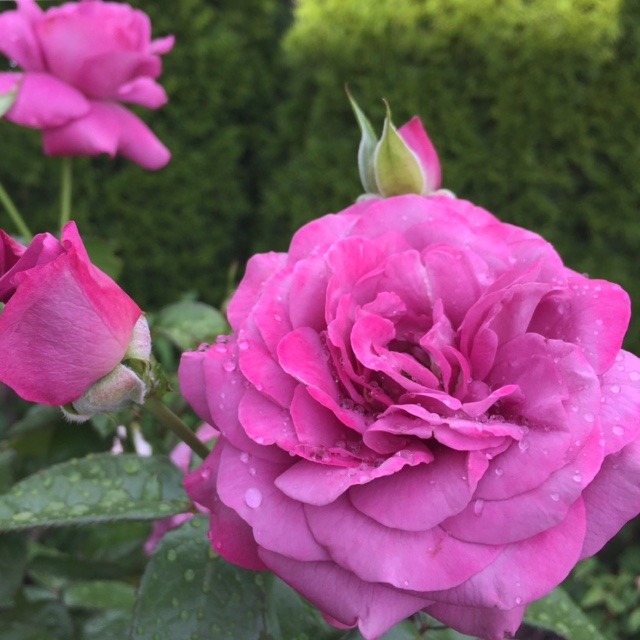|
|
'KO 99/1825-04' rose Description

Photo courtesy of cole
HMF Ratings:
47 favorite votes.
Average rating:
EXCELLENT-.
Bloom:
Lavender. . Mild to strong fragrance. 75 petals. Average diameter 2.75". Medium, very full (41+ petals), cluster-flowered, in small clusters, flat, reflexed, ruffled bloom form. Blooms in flushes throughout the season. Pointed buds.
Habit:
Short, bushy, upright. Medium, glossy, medium green, leathery foliage. 5 to 7 leaflets.
Height: up to 47" (up to 120cm).
Growing:
USDA zone 5b through 9b. Can be used for beds and borders, container rose, cut flower or garden.
Patents:
Australia - Application No: 2011/155 on 8 Jul 2011 VIEW PBR PATENT‘KORvodacom’ was the resultant seedling from a cross between the seed parent ‘KORkultop’ and an unnamed seedling in May 2000 at the breeding facility of W. Kordes Sohne in Sparrieshoop, Germany. The seedling was selected in May 2001 and was budded onto Rosa canina planted in the open field. Follow up selections took place in 2002 and 2007 and was commercially introduced in September 2008. Breeder: Wilhelm Kordes. United States - Patent No: PP 22,691 on 1 May 2012 VIEW USPTO PATENTApplication No: 12/925,197 on 15 Oct 2010 The new variety of rose plant of the present invention originated from a controlled crossing in a breeding program of two distinct parents during the summer of 1997. The crossing was between an `un-named seedling` and an `un-named seedling`.
Notes:
Sold 2016/17 in Switzerland and Germany as 'Glendora'.
Different breeding years in the US and Australian patents
|